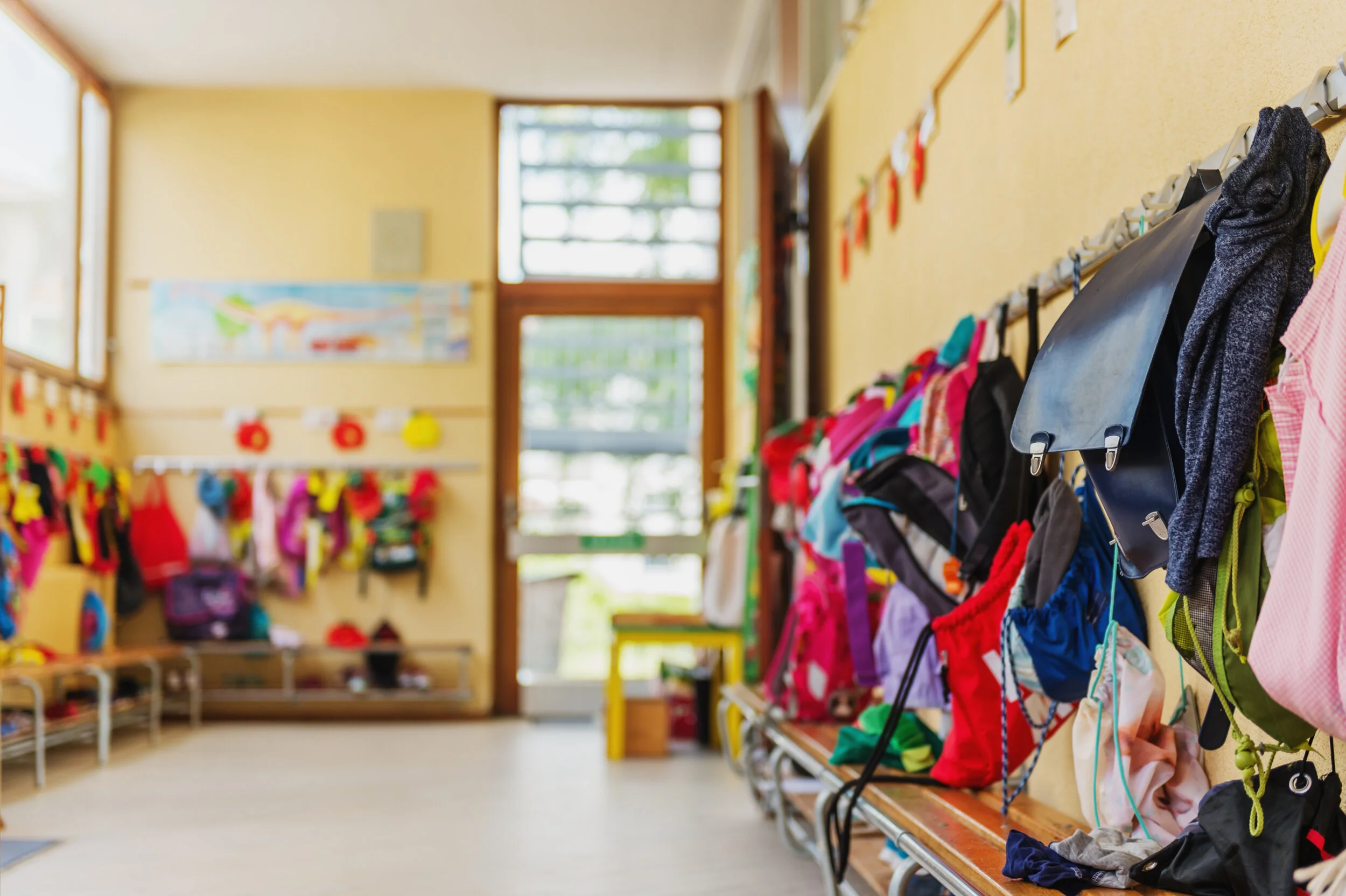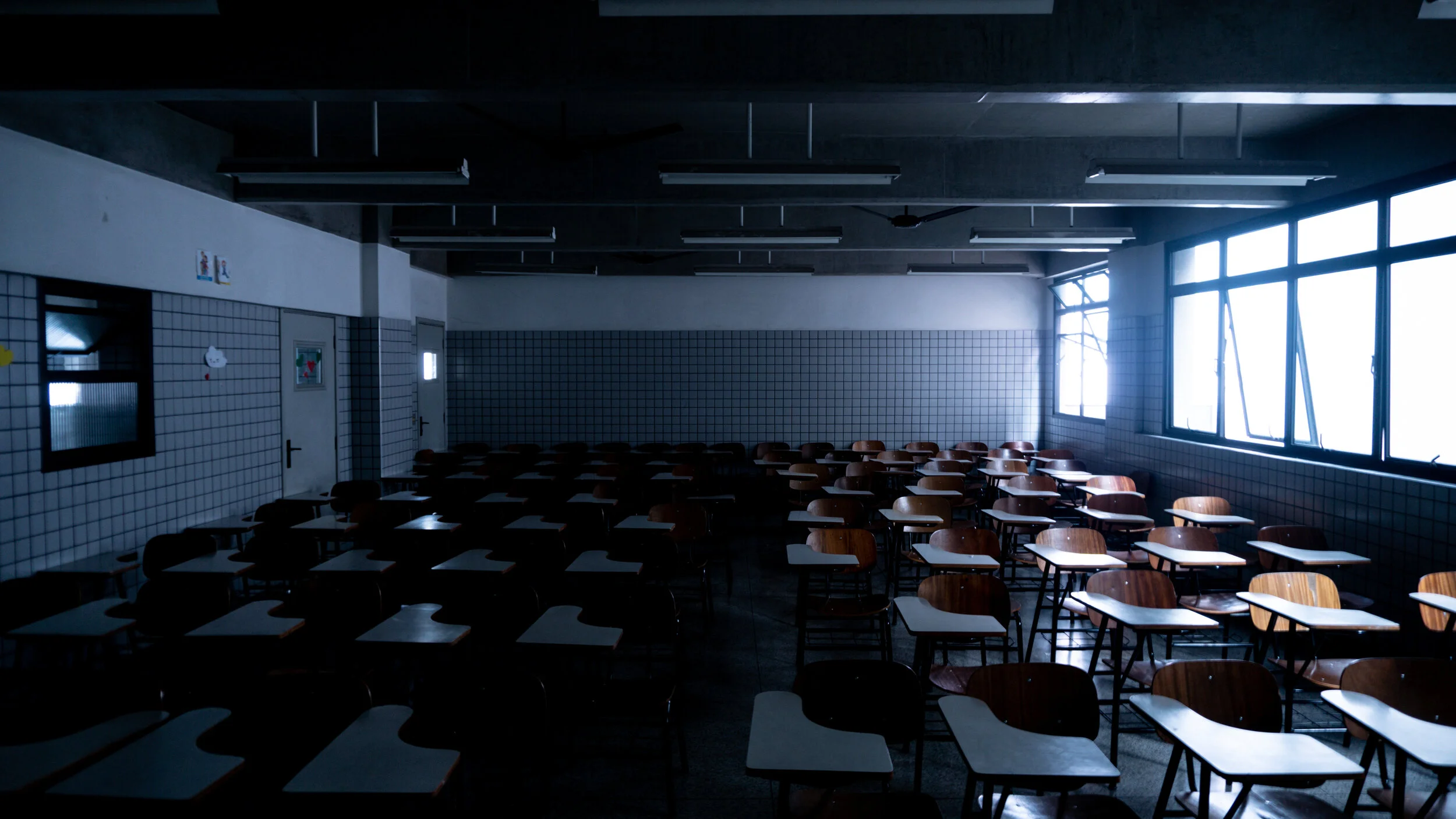Drafting a budget from the August 2021 Senate reconciliation framework that satisfies the Senate rules of reconciliation (“Byrd Rule”) will require a decrease in new outlays or a large increase in revenues (or both) after the standard 10-year budget window.
One such potential reduction in spending would allow the new non-healthcare related discretionary spending provisions to expire after 2031.
With this reduced spending in 2031, we project that the reconciliation package will decrease GDP by 4.0 percent in 2050. Without this spending decrease (and where the Byrd Rule is not satisfied), we project a 4.8 percent fall in GDP in 2050.
Economic Effects from Preschool and Childcare Programs
By 2051, we find that a combination of targeted preschool and targeted childcare programs increase GDP by 0.1 percent relative to current policy, even if deficit financed. Universal versions of these programs are more costly and would instead reduce GDP by 0.2 percent by 2051.
Who Attends Community College?
About 30 percent of students who first attend two-year community college are from families with incomes above the median income for students attending four-year colleges. Moreover, upwards of one-fifth of top students from relatively small and large high schools first attend a two-year institution.
President Biden’s FY2022 Budget Proposal: Budgetary and Economic Effects
PWBM estimates that President Biden’s FY2022 budget proposal would increase spending by $6.1 trillion and increase revenue by $3.9 trillion over the 2022-2031 budget window. By 2050, we project that the President’s budget proposals would decrease public debt by 5.1 percent and decrease GDP by 1.5 percent relative to current law.
COVID-19 School Closures: Long-run Macroeconomic effects
PWBM estimates that the learning loss from school closures reduced GDP by 3.6 percent in 2050. Extending the 2021-22 school year by one month would cost about $75 billion nationally but would limit the reduction in GDP to 3.1 percent. This smaller reduction in GDP produces a net present value gain of $1.2 trillion over the next three decades, equal to about a $16 return for each $1 invested in extending the 2021-22 school year.
President Biden's American Families Plan: Budgetary and Macroeconomic effects
PWBM projects that the American Families Plan (AFP) would spend $2.5 trillion, about $700 billion more than the White House’s estimate, over the 10-year budget window, 2022-2031. We estimate that AFP would raise 1.3 trillion in new tax revenue over the same period. By 2050, the AFP would increase government debt by almost 5 percent and decrease GDP by 0.4 percent.
COVID-19: Cost of virtual schooling by race and income
PWBM estimates that schools in the Philadelphia and surrounding suburb districts with more Black students are less likely to reopen with in-person instruction relative to schools with more White students, even after controlling for differences in income by district. By March 2021, Black students in grades K-5 have incurred a 11.9 percent loss in lifetime income from school closures while White students have lost 10.4 percent. Students educated in the city face larger losses than students educated in the surrounding suburbs.
PWBM Budget Contest: TEACHUP Early Childhood Education Grants
The TEACHUP program, proposed by Rick Miller, Ph.D. as part of the PWBM Democratizing the Budget Contest, would give grants to states in order to provide full-day preschool for four-year-old children at or below 200 percent of the poverty line. On a conventional basis, PWBM projects that TEACHUP would cost $92.4 billion over ten years and a total of $282.53 billion by 2050. However, on a dynamic basis that includes productivity effects and expansion of the tax base, PWBM estimates that the program would effectively pay for itself by 2050 by holding public debt nearly constant.
School Reopening During COVID-19: A Cost-Benefit Analysis for Philadelphia Suburbs
We estimate the average cost of a COVID-19 infection for four Philadelphia-area counties at $8,000 to $13,000, less than half of our national average cost estimate ($27,230). We estimate a trade-off between cost of infections to the community from in-person schooling versus the lost future earnings to students from closing schools. For example, if Montgomery county had implemented full in-person school in the fall, we project the costs of infection would have been at most $429 million. However, closing schools costs students as much as $4.4 billion in present value of future wages.
COVID: Trade-offs in School Reopening
We estimate that each month of school closures in response to the COVID pandemic cost current students between $12,000 and $15,000 in future earnings due to lower educational quality. We also estimate total value-of-life, medical, and productivity costs per infection at $38,315 for September 2020. Using these costs, we calculate the cost-benefit threshold to keeping schools closed for October at over 0.355 new expected infections in the community per student kept out of school.
PWBM Analysis of the Biden Platform
Presidential candidate Joe Biden’s campaign has released a substantial list of policy proposals. PWBM finds that over the 10-year budget window 2021 – 2030, the Biden platform would raise $3.375 trillion in additional tax revenue and increase spending by $5.37 trillion. Including macroeconomic and health effects, by 2050 the Biden platform would decrease the federal debt by 6.1 percent and increase GDP by 0.8 percent relative to current law. Almost 80 percent of the increase in taxes under the Biden tax plan would fall on the top 1 percent of the income distribution.
The Increasing Mortality Gap by Education: Differences by Race and Gender
Additional education is associated with similar reductions in mortality rates for men and women—in 2016, for example, men and women with high school degrees had mortality rates 16 percent and 14 percent lower, respectively, than those without degrees. That same year, however, the mortality advantage of completing a high school degree was 18 percentage points higher for White people than for Black people.
The Increasing Mortality Gap by Education
Over the last two decades, a mortality gap has opened up across education levels. For those born after 1950, each additional level of educational attainment is associated with at least an 18 percent lower mortality rate.
More Gains to Moving for College Educated Workers
Internal migration of working-age people in the United States has fallen by more than a third – from 18.9 percent in 1994 to 11.4 percent in 2018 (see Figure 1). This phenomenon has received significant scholarly attention – Cooke (2013) for example, attributes this decline to the rise of information and communication technologies. Alternatively, Molloy, Smith, and Wozniak (2011) point to broad macroeconomic shifts.
Reduced internal migration has important economic implications, particularly for labor markets. We find that wages grow faster for movers, especially for those with a college degree.
Why Are Recent Immigrants Better-Educated Than Ever Before?
In a previous blog post, I described two significant changes in the characteristics of newly arriving immigrants (legal and unauthorized) to the U.S. between 1997 and 2017. First, the share of recent immigrants aged 25 and older who had bachelor’s or advanced degrees rose from 30 percent to 48 percent. Second, the origins of new immigrants to the U.S. shifted dramatically, as immigration from Mexico and Europe declined in importance while immigration from Asia and Africa grew. In this post, I examine the relationship between these two changes.
Recent Immigrants Are Better-Educated Than Ever Before
From 1997 to 2007, a newly arrived adult immigrant to the United States was about as likely to have a college degree as to have not finished high school. During that period, each group accounted for about one third of new arrivals (including both legal and unauthorized immigrants). Over the decade since 2007, those odds changed dramatically. The share of recent immigrants with a college degree grew by nearly 50 percent, while the share without a high school degree fell by a similar proportion (see Figure 1). By 2017, a recently arrived immigrant was almost three times as likely to have a college degree as to have not finished high school.
For Teen Workers, Parents’ Education Matters
Teenage employment has declined significantly since the late 1990s. Using data from the Current Population Survey, Figure 1 shows that 63 percent of teens aged 16 to 18 worked in 1993, but that percentage fell to 41 by 2015.
Education and Income Growth
In the New York Times article “Why Is It So Hard for Democracy to Deal with Inequality?” Thomas B. Edsall relates the growth of income inequality in democracies to changes in voting patterns among those who are highly educated.
PWBM’s brief, “Education and Income Growth” was used to highlight that the incomes of highly educated people are growing in comparison to those with less education. The author finds that this trend motivates highly educated voters to support the continuation of current policy rather than policy reforms favorable to the working class.
Tax Benefits for College Attendance
Tax benefits for higher education make up 17 percent of federal aid for postsecondary students.
Families find it difficult to take advantage of tax benefits for higher education. About 14 percent of families do not take benefits for which they qualify. Evidence that tax benefits for higher education induce more students to go to school is weak.
The authors explore the potential impact of different simplification strategies, providing a roadmap for future empirical work.
Education and Income Growth
- The large premium that college degree holders earn relative to workers with only a high school diploma suggests that a better-educated workforce would increase U.S. output.
- Barriers to borrowing against future income, though, may make it difficult to acquire a college education, implying a potential role for using policy to increase access to college, especially if it is appropriately targeted.
- However, college education is costly, and the payoff is uncertain and realized only after a lengthy absence from the workforce. Optimal policy, therefore, aims to balance these costs against the potential benefits, requiring the explicit modeling of education attainment when making budget projections.












